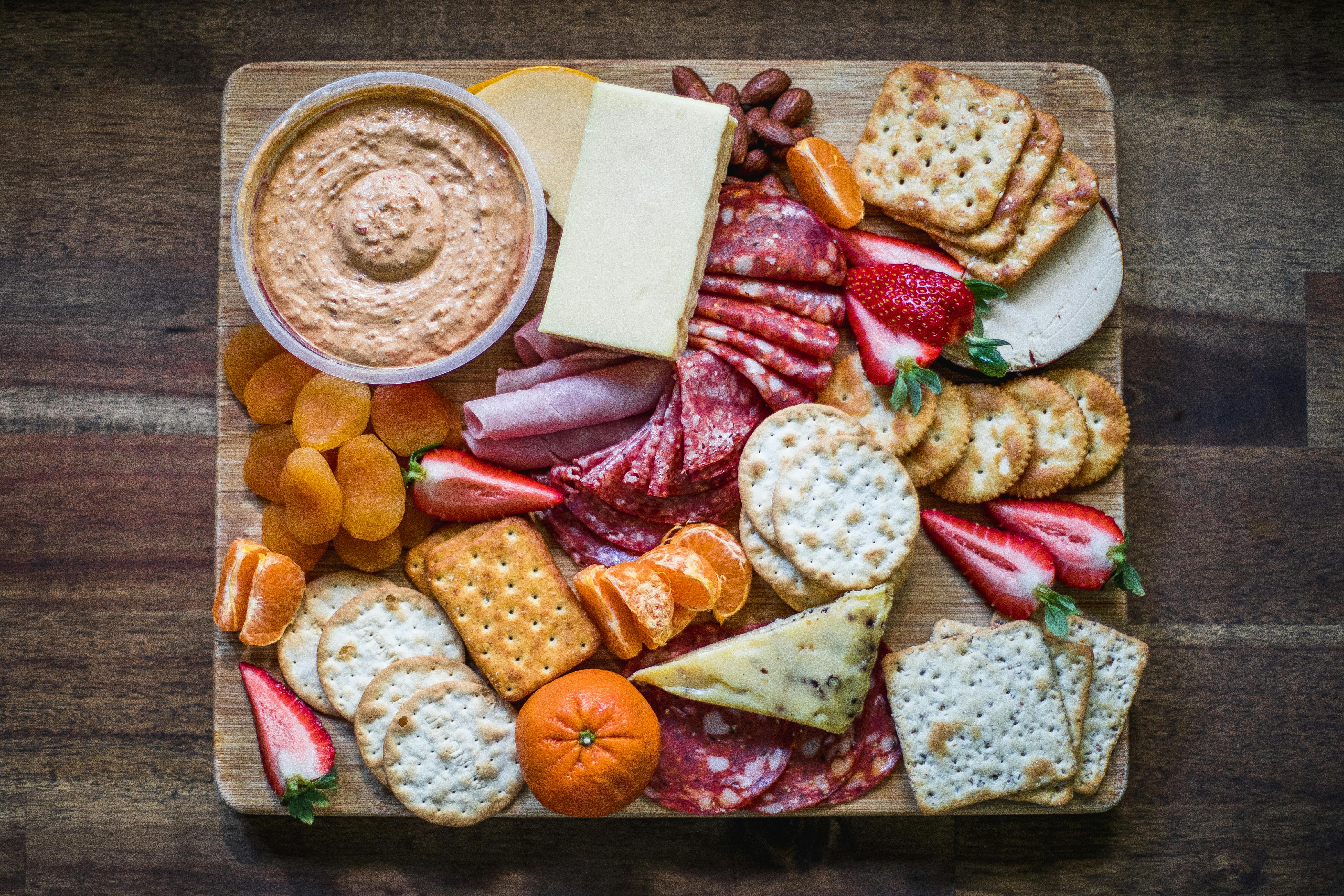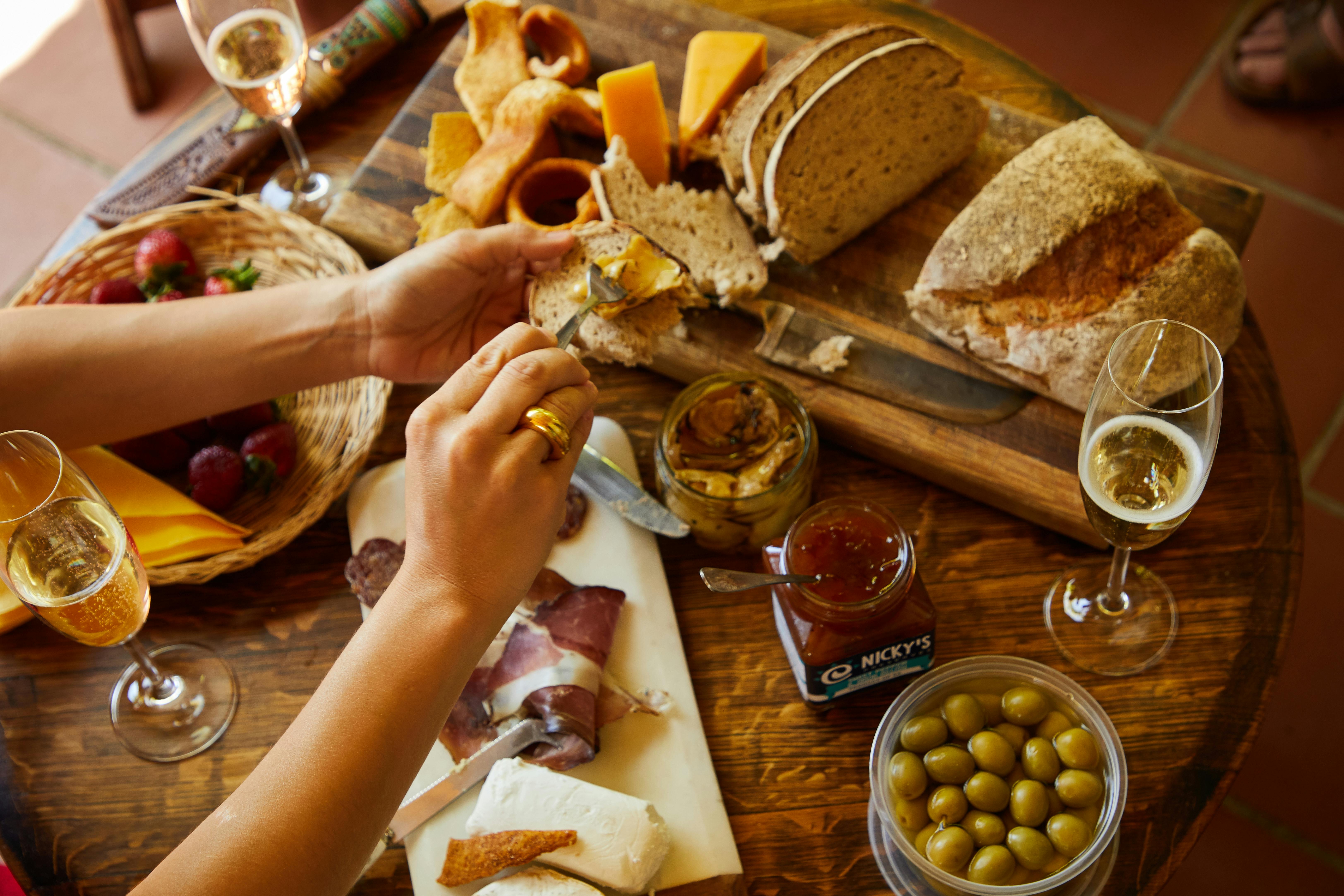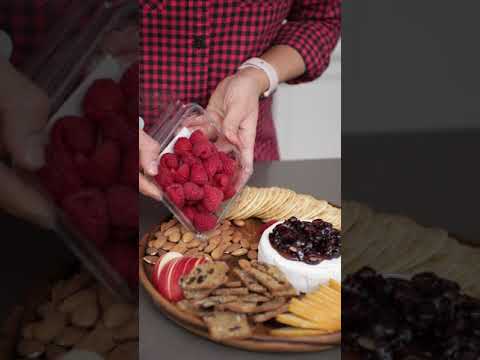Cheese is a versatile food that can be eaten in a variety of ways, from simply on its own to as part of a larger meal. One of the most popular ways to enjoy cheese is with fruit, as the combination of sweet and savory flavors makes for an incredibly delicious snack or appetizer. There are many types of fruit that pair well with cheese, from classic fruits like apples and pears to more exotic fruits like figs and dates. In this article, we will explore some of the best fruit-and-cheese combinations and discuss why they work so well together.Fruits such as apples, pears, figs, grapes, apricots, melon, strawberries and blueberries are all excellent choices to pair with cheese. The sweetness of the fruit complements the saltiness of the cheese. Additionally, dried fruits like dates or raisins add a touch of sweetness that can be balanced with a sharp cheddar or blue cheese.
Cheeses That Pair Well With Fruit
Cheese and fruit are a classic combination that creates a dynamic and delicious flavor profile. The creamy texture of cheese combined with the sweetness of fruit is a perfect balance, and there are many types of cheeses that pair well with fruit. From creamy Brie to sharp Cheddar, there’s something for everyone when it comes to cheese and fruit pairings.
Brie is a classic cheese choice for pairing with fruit. Its mild flavor is enhanced by the sweet notes of the fruit, making it a great option for entertaining. Brie pairs perfectly with apples, figs, pears, or any other type of berry. Soft goat cheese is another great option for pairing with fruits – its mild flavor creates the perfect balance between sweet and savory.
When it comes to sharper options, blue cheese works wonderfully when paired with sweeter fruits like pears or grapes. The salty notes of blue cheese are balanced out by the sweetness of the fruit, creating an unexpected yet delicious combination. Cheddar is also an excellent choice – its strong flavor contrasts nicely with the lightness of fresh fruits like apples or strawberries.
No matter what type of cheese you choose, there’s sure to be a delicious pairing that everyone will enjoy! Cheese and fruit pairings can be served as appetizers or desserts, making them a versatile option for any occasion. So next time you’re looking for an easy way to add some flavor to your meal, try one of these classic combinations!
Picking the Right Cheese and Fruit Combination
Choosing the perfect cheese and fruit combination can be a daunting task. With so many varieties of cheese and fruits to choose from, it can be hard to know where to start. Fortunately, there are a few key elements that can help you create the perfect pairing.
First, consider the flavor profile of both the cheese and fruit. A mild cheese like brie may pair better with a tart apple than a sharp cheddar or blue cheese. On the other hand, a bolder cheese like aged gouda can stand up to a sweet peach or nectarine. Experimenting with different flavor profiles will help you find the best combination.
Next, think about texture when deciding on your pairing. A soft cheese will pair nicely with a juicy fruit like grapes or raspberries, while a harder cheese is best matched with crisp apples or pears. Matching textures helps bring out each individual flavor without overpowering either one.
Finally, consider how you want to serve your chosen combination. If you’re hosting an outdoor gathering, slices of melon or stone fruits like nectarines are great for snacking on their own or as part of an assortment of cheeses and crackers for grazing guests. For an indoor gathering, opt for softer cheeses served with grapes or berries for a light appetizer that won’t overwhelm your guests’ palate before dinner is served.
No matter what type of gathering you’re hosting, understanding how to pick the right cheese and fruit combination will make it easier to create an impressive spread that all your guests will enjoy. So take some time to experiment and find the perfect pairing – your taste buds won’t regret it!
Fruits to Avoid When Serving Cheese
When serving cheese, there are certain fruits that should be avoided. Strong-flavored fruits such as pineapple, mango, papaya, and kiwi can overpower the delicate flavor of the cheese. Citrus fruits such as oranges or grapefruit can have a tart flavor which can also interfere with the subtle flavors of the cheese. Additionally, some dried fruits such as figs or dates may have a slightly bitter taste which can detract from the overall flavor of the cheese.
Therefore, when selecting accompaniments for your cheese plate or platter, it is best to stick to mild-flavored fruits such as grapes, melons, apples, pears, and berries. These mild-flavored fruits will help bring out the subtle flavors of the cheese without overpowering them. Berries in particular are often sweet enough to balance out any sharpness present in the cheese.
In addition to fresh fruit accompaniments, it is also important to choose appropriate crackers or breads that will complement both the texture and flavor of your cheeses. Nuts and other savory items such as olives or charcuterie can also be added for balance when serving multiple types of cheeses.
What Are the Most Popular Cheese and Fruit Combos?
Cheese and fruit are a classic combination that has been enjoyed for centuries. From creamy Brie cheese and tart apples to salty feta cheese and sweet grapes, there are countless combinations of cheeses and fruits that can be enjoyed together.
The most popular cheese and fruit combos vary from country to country, but some of the most beloved include sharp cheddar cheese with apples, blue cheese with pears, brie with strawberries, gruyere with melon, gouda with figs, ricotta salata with oranges, goat cheese with cherries or raspberries, cream cheese with honeydew melon or pineapple, and feta with grapes.
These combinations pair perfectly together because of the contrast in texture and flavor between the two ingredients. The creamy texture of many cheeses is balanced out by the crunchy texture of many fruits. Similarly, the tartness of some fruits is balanced out by the saltiness of many cheeses. When paired together correctly, these two ingredients create a perfect harmony on your plate!
Cheese and fruit pairings are a great way to add flavor to any meal or snack. They also provide a great source of protein if you’re looking for a healthy snack. Additionally, these combos can be enjoyed as appetizers before dinner or as desserts after dinner. No matter how you enjoy them, there is no denying that these combinations are delicious!

Cheese and Fruit Platters
Cheese and fruit platters are a great way to impress your guests and make for an elegant appetizer. A cheese and fruit platter can be as simple or as elaborate as you like, making it perfect for any occasion. When putting together a cheese and fruit platter, it’s important to pay attention to the balance of flavors and textures. A good combination of cheeses, fruits, and accompaniments will create an eye-catching presentation that will have your guests wanting more!
When selecting cheeses for your platter, choose a variety of textures, flavors, and colors. An easy way to do this is by picking one soft cheese (such as brie), one semi-soft cheese (such as gouda), one hard cheese (such as parmesan), and one blue cheese (such as gorgonzola). This gives the platter a nice balance of flavors.
When choosing fruits for your platter, pick several that are in season. In addition to seasonal fruits, you may also want to include some dried fruits such as apricots or figs for added flavor. Consider also adding some nuts such as almonds or walnuts for added crunch.
Once you have chosen the cheeses and fruits for your platter, you will need to choose some accompaniments such as crackers or breads. Pick a variety of shapes and sizes that will pair nicely with the other items on the plate. You may also want to add some jams or honey for added sweetness.
Finally, arrange the items on the plate in an attractive manner. Place the cheeses in different sections of the plate so they are easily accessible by guests. Place the fruits around these sections in clusters so they stand out against each other. Arrange any crackers or breads on top of the cheeses and place any accompaniments next to them in small bowls or ramekins.
With these tips in mind, creating a beautiful cheese and fruit platter is easy! Have fun experimenting with different combinations of ingredients to create something special that your guests won’t soon forget!
Creating the Perfect Balance of Flavors
When it comes to cooking, creating the perfect balance of flavors can make or break a dish. Sweet and savory flavors are often used together to bring out the best in a meal. Sweetness can add depth and complexity to savory dishes, while adding a hint of saltiness can help to bring out the sweetness in desserts. Finding the right balance between sweet and savory is essential for creating delicious dishes that will tantalize your taste buds.
The first step in achieving this perfect flavor balance is understanding the different types of flavors available. Sweet flavors come from sugar, honey, and syrups, while savory flavors come from salt, herbs, spices, and even some vegetables like onions or garlic. Each flavor has its own unique characteristics that can be used to enhance or balance out other ingredients in a dish. For example, a pinch of salt can help to bring out sweetness in a dish without overpowering it. Similarly, adding a bit of sugar can help to bring out the natural flavor of certain vegetables like carrots or sweet potatoes without them tasting too sweet.
Next, experiment with different combinations of ingredients until you find what works best for you. Start by trying different amounts of each ingredient and see how they interact with each other. For example, if you’re making a savory dish like a stew or soup, try adding small amounts of sugar or honey along with your spices and herbs to see if it helps enhance the other flavors in the dish. When baking desserts like cakes or cookies, try using slightly less sugar than usual and add some salt or spices for added flavor.
Finally, practice makes perfect! Keep experimenting with different ingredients until you find what works best for you and your palate. As you become more comfortable with combining different flavors in your cooking, you’ll be able to create dishes that have just the right amount of sweetness and savoriness to satisfy everyone’s taste buds!
Adding Nuts to Enhance Your Cheese and Fruit Board
Cheese and fruit boards are a great way to enjoy a variety of flavors and textures. Adding nuts to your cheese and fruit board can add a new layer of flavor, texture, and nutrition. Nuts are a great source of healthy fats, protein, vitamins, minerals, and antioxidants. They are also an excellent source of fiber, which helps promote healthy digestion.
Nuts pair especially well with many types of cheeses because of their crunchy texture and nutty flavor. When selecting nuts for your cheese and fruit board, consider what type of cheese you will be serving. For instance, if you are serving a hard cheese such as cheddar or parmesan, then adding walnuts or almonds would be a great choice. If you are serving a soft cheese such as brie or camembert, then adding pistachios or hazelnuts would be ideal.
When choosing the type of nuts for your board it is important to consider the flavors that will work well together. For example, if you are serving fruits such as apples or pears then adding walnuts or pecans would be an excellent choice because their sweet nutty flavor pairs well with the sweetness of the fruit. On the other hand, if you are serving fruits such as citrus fruits then adding macadamia nuts or cashews would be a better option because they have a more subtle flavor that won’t overpower the citrus notes in the fruit.
It is also important to consider how much nutty flavor you want on your board when deciding which type of nuts to use. Some types of nuts such as almonds and walnuts have stronger flavors than others like macadamia nuts or cashews so it is important to choose one that will complement rather than overpower the other flavors on your board.
Finally, when arranging your cheese and fruit board with nuts it is important to focus on presentation as well as flavor. Try arranging the different components in an attractive pattern by alternating between different types of cheeses, fruits, and nuts. This will create an eye-catching display that will make it all the more enjoyable for your guests!

Conclusion
Fruit and cheese are a classic combination that offers something for everyone, even those with dietary restrictions. Whether you’re looking for a simple snack or an elegant dessert, the options are endless. Fruits like apples, pears and figs pair well with creamy cheeses like brie and camembert while tart fruits like cranberries and cherries pair nicely with aged cheddar or blue cheese. With so many delicious possibilities, you can easily create the perfect pairing to satisfy any palate.
No matter what type of cheese and fruit you choose, it’s important to remember that balance is key. The sweetness of the fruit should complement the saltiness of the cheese without overpowering it. Experimenting with different flavors is part of the fun, so don’t be afraid to try something new. With a little creativity, you can come up with a unique combination that will delight your taste buds.



